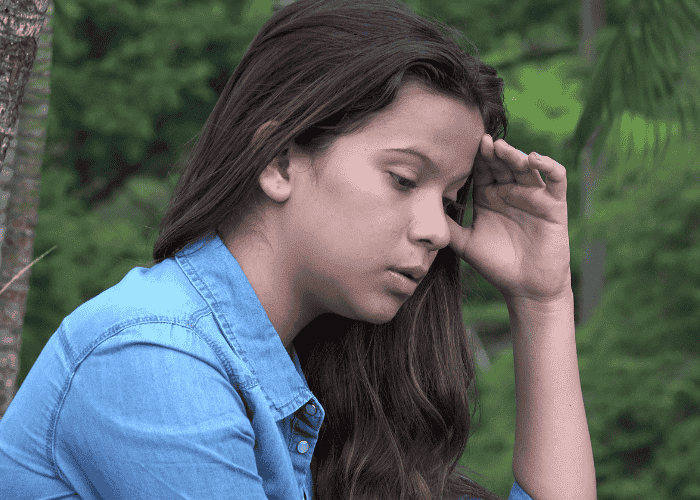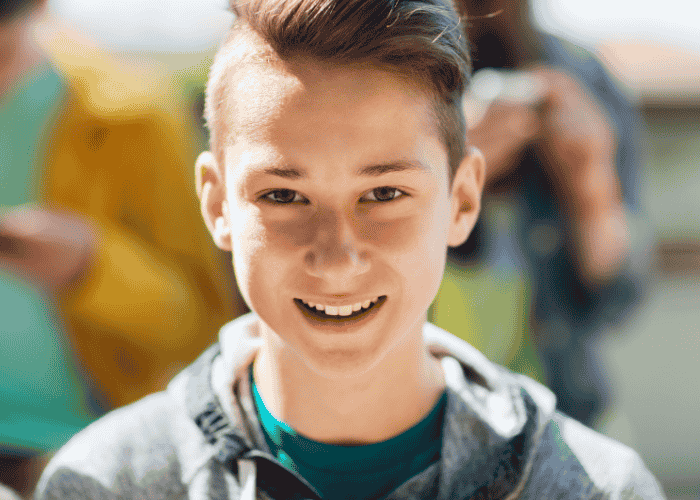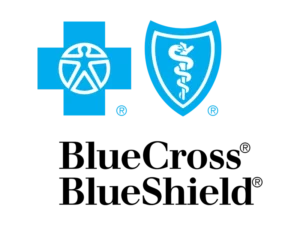Teen Restlessness: Anxiety, Hyperactivity, and Support Strategies

Restlessness can be difficult to define because it depends on our internal feelings. It has been suggested that there are two types of restlessness: physical and internal. Physical restlessness is closely tied to hyperactivity and needing to constantly be in motion. Internal restlessness is our own feeling of being “on edge” or “uneasy”.
In teens, restlessness can be associated with underlying mental health conditions that can impact their daily lives. Therefore, recognizing and understanding restlessness and hyperactivity in adolescence is important for ensuring a child’s overall physical and mental wellness.
To help clarify what teen restlessness is and where it can come from, this page focuses on:
- What restlessness is
- Hyperactivity in teens
- Restlessness and anxiety
- Early intervention for ADHD or anxiety
- Parental support for restless behavior

What Is Restlessness?
When you think of restlessness, you might envision a child jumping out of their seat or running around a classroom. The urge to move and finding it difficult to sit still is one form of restlessness known as “physical restlessness.”1 Another form of restlessness is harder to measure and is known as “internal restlessness.”
Research focused on internal restlessness developed different dimensions to characterize this inner feeling: distractibility, mental restlessness, impulsivity, and disorganization.1 All of these factors are closely tied to attention-deficit/hyperactivity disorder (ADHD), anxiety, and mood disorders, particularly in adolescence.1
One way to measure a teen’s feeling of restlessness is to use a self-report questionnaire like the Internal Restlessness Scale (IRS). The IRS looks at behaviors, thoughts, and feelings that fuel restlessness in children. For example, the questionnaire asks adolescents whether they agree or disagree with statements such as, “I focus on tasks,” “Thoughts race through my mind,” and “I have difficulty planning.”1 Measures like this can be helpful for recognizing teen restlessness and determining how it gets in the way of their everyday life.
Hyperactivity in Teens
As we mentioned, hyperactivity can be related to physical restlessness. Hyperactivity in relation to ADHD is defined in the DSM according to symptoms. Signs of hyperactivity in teens include:2
- Fidgeting and squirming in their seat
- Leaving the classroom when they are supposed to remain seated
- Running or climbing at inappropriate times (or having the urge to run around)
- Difficulty playing quietly
- Constantly “on the go”
- Talking excessively
Levels of hyperactivity usually decline as children get older, but if you notice this is a consistent problem with your child, it could be a sign of ADHD, anxiety, or a mood disorder.1 When making a mental health diagnosis, an important consideration is whether the level of hyperactivity interferes with the adolescent’s daily activities.
Restlessness and Anxiety
Generalized anxiety disorder (GAD) comes with a variety of symptoms in teens. For example, constant worrying is one of the main criteria for diagnosing GAD in adolescents. Other symptoms include feelings of restlessness or on edge, irritability, muscle tension, sleep problems, difficulty concentrating, and being easily fatigued.3
If we dig deeper into restlessness and anxiety, we find that the research suggests that being in a state of constant worry is associated with greater feelings of restlessness. Researchers measuring the different symptoms in adolescents have grouped together irritability, restlessness, nervous tension, agitation, difficulty relaxing, and low frustration tolerance under the umbrella term of “Stress and Tension.”
This indicates that stress-related restlessness could be a symptom of anxiety disorders in teenagers.3
Early Intervention for ADHD or Anxiety
If you are concerned that your child’s restlessness is a sign of ADHD or anxiety, it’s important to seek help sooner rather than later. However, a key challenge to providing early intervention for ADHD or anxiety in adolescents can be getting a clinical diagnosis in the first place. Let’s explore the process of diagnosis and treatment for ADHD and anxiety separately.
Diagnosing and Treating ADHD
Diagnosing ADHD in teenagers can often be difficult if the main symptoms are related to inattention. Impulsivity and hyperactivity might be displayed more subtly at this age. Additionally, ADHD can co-occur with depression and anxiety, making it unclear what the primary diagnosis should be for your child. Luckily, many diagnostic tools for ADHD also screen for depression and anxiety to account for this overlap.4
Upon receiving a clinical diagnosis of ADHD, parents and teens have an additional challenge to overcome in accessing the right treatment. Primary care physicians may be hesitant to treat ADHD in adolescence because they don’t specialize in the area.4 To overcome this challenge, you can bring your child to a qualified mental health professional, such as a psychiatrist or psychologist.
When being treated by a mental health professional, your child may be offered different options for managing their symptoms. For example, certain medications (stimulants and non-stimulants) have proven effective in reducing ADHD symptoms, with stimulant medications having the most evidence in the current research.4
In addition to medications, there are alternative interventions for managing ADHD in adolescents. One area of focus is conflict management, specifically between you and your child, when problem behaviors emerge. A therapeutic program has been created to target this, which is called the “Barkley and Robin treatment package.”
This program involves parental education, teaching the appropriate use of positive reinforcement or punishment, managing expectations for both parents and teens, developing better problem-solving skills, and communicating more effectively. Cognitive Behavioral Therapy (CBT) is another form of therapy being tested in adolescents with ADHD, but the research is still limited.4
Addressing Anxiety Symptoms in Adolescents
Anxiety disorders are the most common psychiatric disorder reported in adolescents, affecting about 30% of teenagers today. Despite this, anxiety is often left untreated due to fewer visits to the doctor and a lack of training by primary care practitioners.5
There are different types of anxiety disorders, and each comes with its unique set of symptoms. For example, GAD is associated with nonspecific worrying accompanied by feelings of restlessness, fatigue, irritability, muscle tension, sleep problems, or difficulty concentrating. However, social anxiety disorder is different in that the child’s fears are directly tied to being embarrassed in a social situation.5
Another anxiety disorder that can arise in adolescence is panic disorder. With panic disorder, the symptoms can come on suddenly and typically involve some physical symptoms. Some of the signs to look out for include the following.5
Signs of Panic Disorder:
- Racing/pounding heartbeat
- Sweating
- Trembling or shaking
- Shortness of breath
- Choking feeling
- Chest pain
- Nausea/stomach ache
- Feeling lightheaded
- Derealization/depersonalization
- Fear of losing control
- Fear of dying
- Numbness or tingling sensations
- Chills or hot flushes
In order to be appropriately diagnosed, adolescents may be asked to answer self-report measures of anxiety by their doctor. Two of the common measures used are the Revised Children’s Manifest Anxiety Scale (RCMAS) and the Multidimensional Anxiety Scale
for Children (MASC).5 Doctors might also want to talk to you about your child’s symptoms and communicate with their teachers to better understand their behavior at school.5
When working with a general PCP, you might get treatment recommendations such as relaxation techniques for adolescents. Some of the techniques commonly used are deep breathing, progressive muscle relaxation, and guided imagery. These techniques can be effective in promoting calm and focus in teens to address restlessness and worry.5
When looking for therapy for restless teens, CBT is one of the most common methods, especially for anxiety in teens. When treating anxiety, CBT focuses on education, exposure, and challenging negative thoughts. CBT can be delivered in an individual setting as well as in a group setting, which might be better for treating social anxiety disorder in particular.5
Finding the right support for your child isn’t always easy, but there are a variety of therapy options available for anxious or hyperactive teens.
Parental Support for Restless Behavior
You can also work on specific factors that impact teen restlessness, such as sleep problems. By focusing on managing sleep and restlessness with your child, you can help them develop better coping strategies so that they can calm themselves in moments of stress.
Mindfulness-based therapy is effective in reducing stress in adolescents.6 Therefore, supporting mindfulness in teens is another way to provide parental support for restless behavior. Additionally, mindfulness techniques can be taught to you and your teen together in group therapy sessions, and have been shown to improve emotion regulation and conflict management.6
Even though your child will need to do the majority of the work to address their struggles with hyperactivity, restlessness, and anxiety, your participation in their treatment can help drive lasting effects.

Mission Prep: Supporting Teen Wellness and Emotion Regulation
At Mission Prep, we want to support you by offering a variety of options for therapy for anxious or hyperactive teens. Our programs focus on addressing the root of the problem, whether this is anxiety, depression, ADHD, or another mental health disorder. We have different levels of treatment depending on your needs, including outpatient therapy, more structured intensive outpatient programs (IOP), and residential mental health treatment.
If you think your child could benefit from mental health treatment, contact us today. A member of our team will answer your questions, listen to your concerns, and provide recommendations for next steps. You don’t have to struggle to find the right mental health treatment for your child.
References
- Weyandt, L. L., Iwaszuk, W., Fulton, K., Ollerton, M., Beatty, N., Fouts, H., Schepman, S., & Greenlaw, C. (2003). The Internal Restlessness Scale. Journal of Learning Disabilities. https://doi.org/10.1177/00222194030360040801
- Rowland, A. S., Lesesne, C. A., & Abramowitz, A. J. (2002). The epidemiology of attention‐deficit/hyperactivity disorder (ADHD): a public health view. Mental retardation and developmental disabilities research reviews, 8(3), 162-170. https://doi.org/10.1002/mrdd.10036
- Fowler, S., & Szabó, M. (2013). The emotional experience associated with worrying in adolescents. Journal of Psychopathology and Behavioral Assessment, 35(1), 65-75. DOI 10.1007/s10862-012-9316-3
- Brahmbhatt, K., Hilty, D. M., Hah, M., Han, J., Angkustsiri, K., & Schweitzer, J. (2016). Diagnosis and treatment of ADHD during adolescence in the primary care setting: review and future directions. The Journal of Adolescent Health: official publication of the Society for Adolescent Medicine, 59(2), 135. doi:10.1016/j.jadohealth.2016.03.025
- Siegel, R. S., & Dickstein, D. P. (2011). Anxiety in adolescents: Update on its diagnosis and treatment for primary care providers. Adolescent Health, Medicine and Therapeutics, 1-16. https://doi.org/10.2147/AHMT.S7597
- Perry-Parrish, C., Copeland-Linder, N., Webb, L., & Sibinga, E. M. (2016). Mindfulness-based approaches for children and youth. Current Problems in Pediatric and Adolescent Health Care, 46(6), 172-178. https://doi.org/10.1016/j.cppeds.2015.12.006













